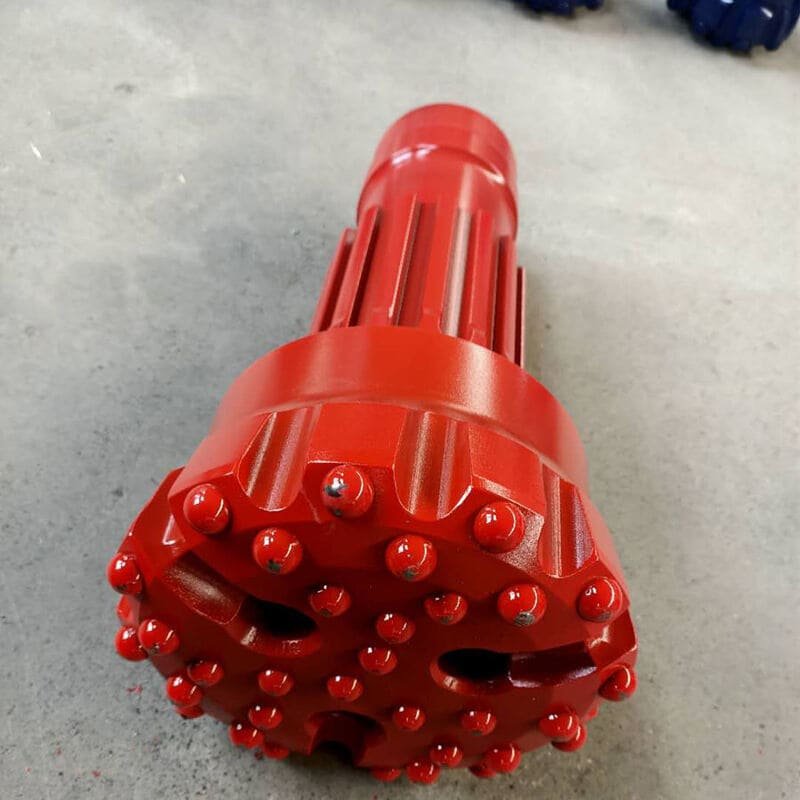Ever wondered how a simple tool like a low-pressure DTH drill bit could make such a big impact across so many fields?
Low-pressure DTH drill bits shine in areas like water well drilling, shallow oil exploration, environmental sampling, small-scale mining, construction, and road development. They’re perfect for medium-hard formations, offering precision and cost-effectiveness where high-pressure systems aren't needed.
Imagine being able to tackle diverse projects with one versatile tool. These drill bits are designed for tasks where efficiency and precision are key, yet don't require the intense power of high-pressure systems. Let's delve into how these tools can elevate your work across various industries, ensuring both performance and efficiency.
Low-pressure DTH bits are used in small-scale mining.True
Low-pressure DTH drill bits are ideal for small-scale mining due to their efficiency in medium-hard formations.
High-pressure systems are preferred for geotechnical sampling.False
Low-pressure DTH drill bits are actually preferred for geotechnical sampling due to their cost-effectiveness and precision.
How are low-pressure DTH drill bits used in water well drilling?
Imagine drilling into the earth, not with brute force, but with finesse. That's the magic of low-pressure DTH drill bits in water well drilling.
Low-pressure DTH drill bits efficiently penetrate medium-hard formations like limestone and siltstone by operating at 7-10 bar, ensuring cost-effective and reliable borehole creation in water well drilling.
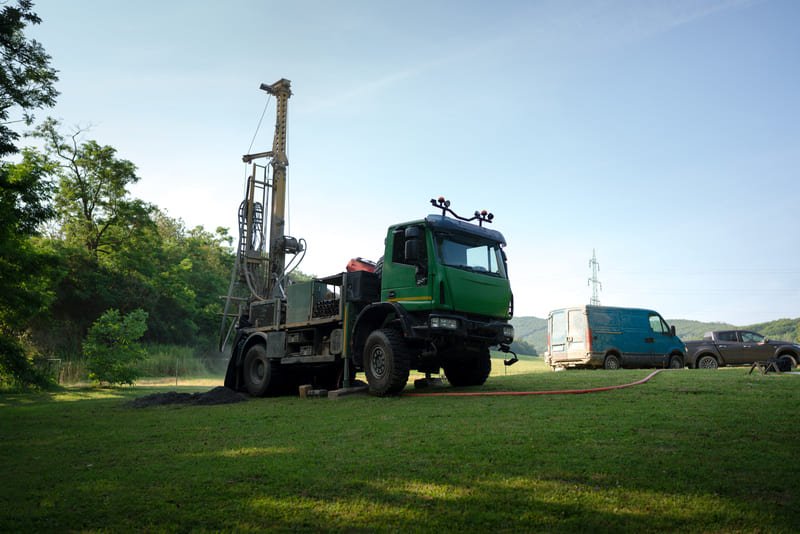
Advantages of Using Low-Pressure DTH Drill Bits
I remember the first time I witnessed the subtle strength of a low-pressure DTH drill bit in action. It was like watching a master artist at work, chipping away effortlessly at a canvas of limestone. These bits thrive on efficiency, operating smoothly at air pressures between 7 to 10 bar. This makes them perfect for tackling medium-hard formations1 like carbonate rock and limestone. The real beauty lies in their ability to drill economically without needing high-power equipment.
| Feature | Benefit |
|---|---|
| Lower Air Pressure | Reduces operational costs |
| Adaptability | Suitable for various soil types |
| Cost-Effective | Lower initial and maintenance costs |
Applications in Residential and Agricultural Wells
In residential and agricultural settings, these drill bits have been like a trusty old friend. They are relied upon for their efficiency2 and reliability, creating wells that meet moderate depth requirements. I’ve seen them adapt to different geological conditions, offering a versatile solution no matter where you’re drilling.
Technical Specifications
The technical side of these bits might seem a tad dry, but it's where their power truly shines:
- Air Pressure Range: 7-10 bar (100 to 145 psi)
- Diameter: Varies depending on application needs
- Material: Constructed with durable materials such as tungsten carbide for extended wear life
Their robust configuration means they excel in environments where minimizing equipment wear and managing energy consumption are top priorities.
Considerations for Environmental Impact
These bits are not just efficient; they're environmentally conscious too. By consuming less energy, they help reduce3 the carbon footprint of drilling operations. I’ve often noticed how their gentle air pressure settings limit noise pollution—perfect for populated areas or sensitive environmental zones.
Compatibility with Existing Equipment
One of the best things about low-pressure DTH drill bits is how seamlessly they fit into existing systems. They are designed to work effortlessly with standard DTH hammers, which means you can integrate them into your current setup without any fuss.
| Equipment Type | Compatibility Features |
|---|---|
| DTH Hammers | Standard fit across various brands |
| Drill Rigs | Adaptable to multiple configurations |
| Support Systems | Easy integration with existing tools |
Understanding these compatibility aspects ensures that water well drilling projects stay on budget and on schedule, making life just a little bit easier.
Low-pressure DTH drill bits operate at 7-10 bar air pressure.True
These bits are designed to function effectively within this air pressure range.
Low-pressure DTH drill bits are unsuitable for medium-hard formations.False
They are ideal for such formations, like limestone, due to their efficiency.
How Do Low-Pressure DTH Drill Bits Impact Shallow Oil and Gas Exploration?
Have you ever wondered what makes shallow oil and gas exploration tick?
Low-pressure DTH drill bits are key players in shallow oil and gas exploration. They efficiently create shot holes for seismic surveys, work at lower air pressures, and offer a cost-effective solution for rapid, large-scale drilling tasks.

Efficiency and Cost-Effectiveness in Shallow Drilling
Imagine being tasked with the immense job of drilling hundreds of holes quickly and efficiently. That's where low-pressure DTH (Down-the-Hole) drill bits come in handy. Operating at pressures between 7 to 10 bar (100 to 145 psi), these bits get the job done without breaking the bank, especially when dealing with medium-hard formations like carbonate rock or chalk. I've seen firsthand how choosing the right bit can make or break a project, especially when budget constraints are tight.
| Parameter | Specification |
|---|---|
| Operating Pressure | 7 - 10 bar (100 - 145 psi) |
| Suitable Formations | Carbonate, limestone, chalk |
| Typical Applications | Seismic shot hole drilling |
Seismic Survey Applications
In my experience, seismic surveys are the heartbeat of shallow oil and gas exploration. Low-pressure DTH drill bits are indispensable here—they're perfect for drilling the shot holes needed in this phase. These holes aren't very deep but must be drilled quickly and accurately across large areas. I recall a project where the ability to drill rapidly4 without inflating costs was a game-changer.
Versatility Across Geological Formations
These bits shine not only because they adapt to various geological formations but because they allow us to remain flexible. Whether it's sandstone or siltstone, having a tool that handles different conditions seamlessly is invaluable. It's like having a Swiss army knife in your toolbox—always prepared for the unexpected.
| Geological Formation | Drilling Suitability |
|---|---|
| Sandstone | High |
| Siltstone | Moderate |
| Chalk | High |
Benefits of Low Pressure Operations
Operating at lower pressures doesn't just save money; it prolongs equipment life by reducing wear and tear. This is crucial when working in remote locations5 where maintenance can be a logistical nightmare. Plus, these systems are lighter, making them easier to transport—a blessing when you're constantly on the move in exploratory projects.
By leveraging low-pressure DTH drill bits, companies like mine can balance efficiency and cost savings, opening up new avenues for exploration without incurring excessive costs. It's all about finding potential reserves without overextending resources—a strategy that has served us well in countless projects.
Low-pressure DTH bits operate at 7-10 bar.True
The context specifies that these bits operate at pressures between 7 to 10 bar.
Low-pressure DTH bits are unsuitable for sandstone formations.False
The context states these bits have high drilling suitability for sandstone.
Why are low-pressure DTH drill bits ideal for environmental and geotechnical sampling?
Imagine the thrill of uncovering hidden truths about our planet with just the right tool in hand. For me, that tool is the low-pressure DTH drill bit, a game-changer in environmental and geotechnical sampling.
Low-pressure DTH drill bits stand out for environmental and geotechnical sampling due to their precision at lower pressures. They excel in medium-hard formations, making them ideal for delicate tasks like soil sampling and monitoring well installations.

The Mechanics Behind Low-Pressure DTH Drill Bits
When I first learned about low-pressure DTH (Down-the-Hole) drill bits, I was fascinated by their clever design. These bits function by delivering a percussive force directly to the bit face through a piston mechanism. Operating efficiently at air pressures between 7 to 10 bar, they're engineered for efficiency in medium-hard geological conditions—think limestone or siltstone. It’s like having a trusty sidekick that knows exactly how much force to apply without overdoing it.
| Feature | Low-Pressure DTH Drill Bits |
|---|---|
| Operating Pressure | 7-10 bar |
| Suitable Formations | Medium-hard formations |
| Application Areas | Soil sampling, monitoring |
Advantages in Environmental Sampling
One of the things I love most about using low-pressure DTH drill bits is how they maintain the structural integrity of the sampled core. This is absolutely crucial when conducting environmental assessments6 because the accuracy of the data hinges on preserving the sample's integrity. Plus, these bits minimize disturbance to the surrounding geology, which is a huge win when working in sensitive ecosystems or protected areas. I remember working on a project where this feature alone saved us countless headaches.
Applications in Geotechnical Sampling
In geotechnical sampling, precision and reliability can make or break a project. Low-pressure DTH drill bits shine here by delivering consistent penetration without excessive wear, even in abrasive soils. This reliability means less downtime and increased project efficiency7—something every project manager dreams of.
Versatility Across Conditions
One of my favorite aspects of low-pressure DTH bits is their versatility. They can handle a variety of geological conditions, making them suitable for tasks like foundation testing or slope stability assessments. Their design allows for straightforward deployment whether you're in the heart of a bustling city or out in the wilderness, enhancing their utility across various sectors.
Comparative Insights
When comparing these to high-pressure systems, low-pressure DTH drill bits offer a sweet spot between cost-effectiveness and performance. Their lower operational pressure means less wear on equipment and reduced energy consumption, leading to significant cost savings over time. It’s worth exploring how they stack up against high-pressure drilling methods8, especially if budget constraints are part of your considerations.
Low-pressure DTH drill bits operate at 7-10 bar pressure.True
These bits are designed to work efficiently within this pressure range.
Low-pressure DTH bits cause significant geological disturbance.False
They are known for minimal disturbance, crucial for environmental studies.
How do low-pressure DTH drill bits benefit small-scale mining operations?
Ever wondered how the right tools can transform small-scale mining? Dive into the world of low-pressure DTH drill bits and see how they're making waves in efficiency and cost savings.
Low-pressure DTH drill bits revolutionize small-scale mining by providing efficient and cost-effective drilling in medium-hard formations. These bits reduce energy consumption, lower operational costs, and enhance productivity without the need for high-pressure systems.
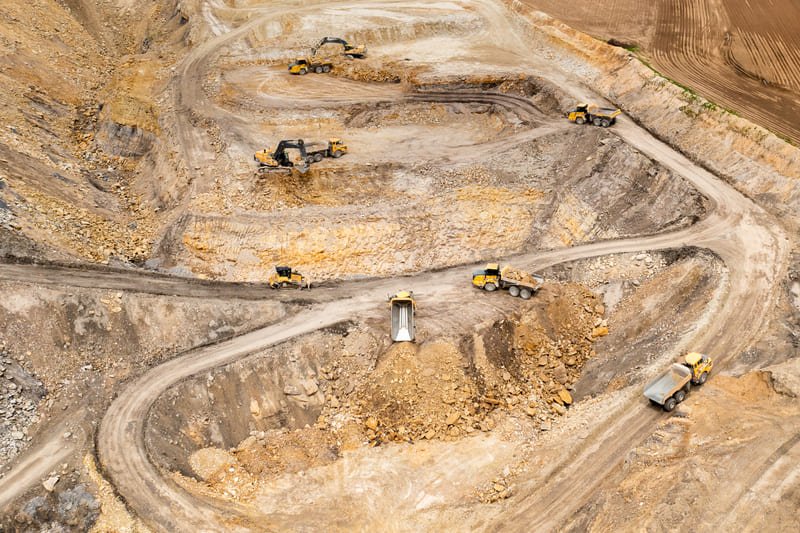
Enhanced Efficiency and Cost Reduction
I remember when I first heard about low-pressure DTH drill bits at a mining expo. The buzz was all about how these little marvels could cut down on costs and still deliver great results. For anyone working in small-scale mining, like me, that's a game-changer. These bits use less compressed air9, which means less energy is gobbled up. This design suits medium-hard formations perfectly, allowing us to dodge the hefty price tags of high-pressure gear.
Versatility in Various Geological Conditions
You know how it feels when you're out there, trying to make sense of different rock types? One day it's limestone, the next it's siltstone. Low-pressure DTH drill bits handle this challenge like pros. Their adaptability means less hassle and more focus on resource extraction, making them a trusty companion in the field.
| Material Type | Typical Application |
|---|---|
| Limestone | Quarrying and construction projects |
| Siltstone | Environmental drilling and sampling |
| Sandstone | Utility installation and infrastructure |
Simplified Maintenance and Longevity
Anyone who's ever been knee-deep in a project knows that maintenance can be a real headache. That's why I appreciate how these bits are built tough, cutting down on replacements. Especially when you're miles from the nearest parts supplier, their durability is a lifeline.
Facilitating Environmental and Safety Compliance
It's not just about getting the job done—it's about doing it safely and responsibly. With low-pressure DTH drill bits, there's less noise and vibration, which makes a world of difference when you're working near communities or sensitive environments. Plus, staying on the right side of environmental regulations is a win for everyone.
For more insights into environmental compliance in mining10, understanding the impact of reduced emissions and noise levels is essential.
Supporting Sustainable Practices
Embracing sustainable practices isn't just a trend—it's a necessity. By incorporating low-pressure DTH drill bits into operations, we can reduce energy consumption and lessen our environmental footprint. This shift aligns with the broader push for greener industrial processes.
Discover more about sustainable mining practices11 and how they can transform small-scale operations.
Low-pressure DTH drill bits reduce energy consumption.True
They use less compressed air, lowering operational energy costs.
High-pressure equipment is essential for small-scale mining.False
Low-pressure DTH drill bits eliminate the need for high-pressure gear.
Why should you consider low-pressure DTH drill bits for your construction projects?
Ever wondered how to make your construction projects more efficient without breaking the bank?
Low-pressure DTH drill bits are game-changers in construction, offering cost-effective solutions for medium-hard formations. They excel in tasks like foundation work and utility installations, delivering precise, reliable results while reducing energy consumption and wear on equipment.
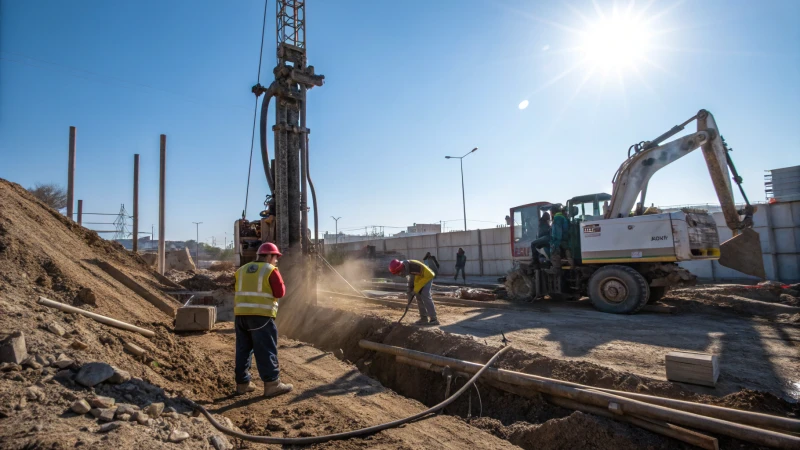
Enhanced Efficiency in Medium-Hard Formations
I remember the first time I encountered low-pressure DTH (Down-The-Hole) drill bits. It was during a project in a quiet suburban area where the noise restrictions were quite strict. These drill bits, working at lower air pressures, turned out to be perfect for drilling through limestone and sandstone without causing a ruckus. They got the job done efficiently while keeping the peace, allowing us to focus on precision work like foundation drilling12 and utility installations.
Cost-Effectiveness and Resource Management
Switching to low-pressure DTH drill bits also brought significant savings on operational costs. It's like finding out that your favorite brand of coffee is on sale every day! By using lower air pressure, we saved energy and extended the life of our equipment. Their design minimizes wear and tear, which is a blessing when you're trying to stretch a budget on large construction projects13.
Precision and Reliability in Construction Tasks
Imagine needing to install anchors in road construction or stabilize a slope but worrying about unexpected delays. The reliability of these low-pressure systems meant we could count on them to keep our projects on track. They're adaptable to various geological conditions, which is a huge plus when dealing with diverse environments.
Versatility Across Multiple Applications
Whether it was environmental sampling or blast hole drilling, these bits proved their versatility time and again. Their ability to handle different drilling needs meant we didn't have to stockpile multiple specialized tools, which improved our inventory management significantly. They became an essential tool across numerous sectors, making life so much easier for our team.
| Application | Benefit |
|---|---|
| Foundation Drilling | Precise and reliable for light structures |
| Utility Installation | Efficient for laying utilities with minimal disruption |
| Road and Highway Construction | Ideal for anchor installation and slope stabilization |
| Environmental Sampling | Accurate for soil sampling and environmental assessments |
Low-pressure DTH drill bits reduce noise in suburban areas.True
Their operation at lower air pressures minimizes noise, ideal for suburbs.
Low-pressure DTH drill bits are not suitable for utility installations.False
They are efficient for laying utilities with minimal disruption.
How Do Low-Pressure DTH Drill Bits Support Road and Highway Construction Projects?
Imagine tackling a massive highway project with precision tools in hand. That's where low-pressure DTH drill bits come into play.
Low-pressure DTH drill bits are essential for road and highway construction, facilitating efficient drilling for tasks like anchor installation, slope stabilization, and drainage channel creation. Their design ensures precise operations in medium-hard formations, making them vital for infrastructure development.
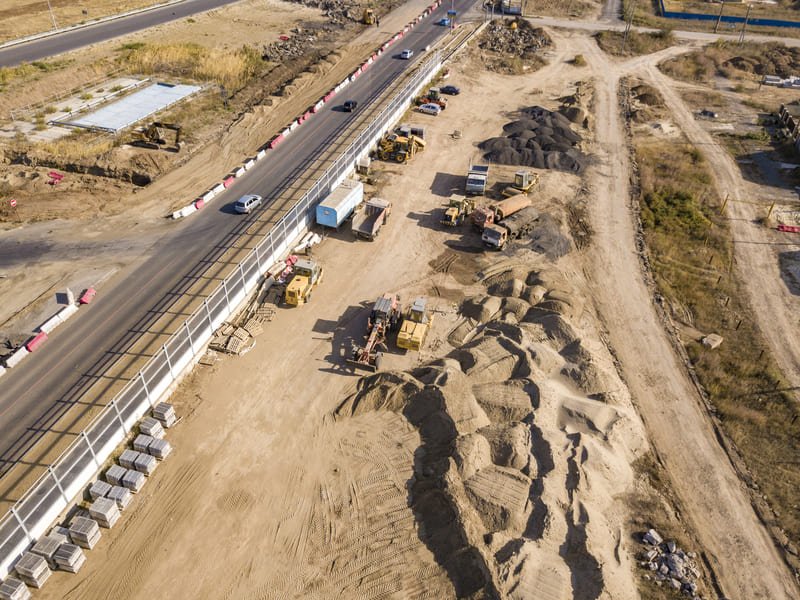
Key Applications in Road and Highway Construction
Anchor Installation
Picture this: you're on a sloped highway project, and stability is the name of the game. Low-pressure DTH drill bits become your best ally, drilling anchor holes that enhance slope stability. Their precision allows for effective anchoring, which is crucial to prevent environmental pressures from wreaking havoc.
Example Usage: On a sloped highway expansion project, using low-pressure DTH bits for anchor holes can enhance slope stability14. Their ability to drill accurately in various rock formations ensures effective anchoring, which is vital for long-term safety.
Slope Stabilization
There was this one time, as I stood at the edge of a newly widened highway, I marveled at how these bits played a pivotal role in inserting soil nails to keep the slopes in check. With an air pressure sweet spot of 7-10 bar, they handle limestone or clay rock beautifully, balancing power with control.
Technical Insight: The typical air pressure range of 7-10 bar makes them suitable for mediums like limestone or clay rock, offering controlled penetration without excessive power consumption.
Drainage Channel Drilling
Efficient drainage is the silent hero behind road longevity. I remember watching these low-pressure bits carve out drainage channels with ease, reducing the risk of waterlogging on a stretch of highway known for its tricky terrain. This approach ensures water flows where it should, safeguarding road integrity.
Case Study: In a recent highway project, the use of low-pressure bits in drilling drainage channels reduced waterlogging risks significantly. This technique enabled efficient drainage solutions15 tailored to the terrain’s natural features.
Advantages of Low-Pressure DTH Bits in Construction
| Feature | Benefit |
|---|---|
| Lower Air Pressure | Minimizes energy use, reducing operational costs. |
| Adaptability | Suitable for various geological formations. |
| Precision Drilling | Enhances accuracy in anchor and drainage setups. |
| Reduced Equipment Wear | Longer lifespan due to moderate pressure application. |
These benefits make low-pressure DTH bits an economical choice when you need both precision and efficiency. They provide robust solutions without the weighty demands of heavy-duty equipment, perfectly aligned with road construction needs.
For deeper insights into optimizing tool performance in similar environments, consider exploring drilling techniques16.
Low-pressure DTH bits reduce energy costs in construction.True
They use lower air pressure, minimizing energy consumption during drilling.
High-pressure DTH bits are ideal for drainage channel creation.False
Low-pressure DTH bits are preferred for controlled penetration in drainage tasks.
Conclusion
Low-pressure DTH drill bits are versatile tools ideal for water well drilling, shallow oil exploration, environmental sampling, and construction, offering efficiency and cost-effectiveness in medium-hard formations.
-
Explore geological formations suitable for low-pressure DTH bits, enhancing your understanding of their application. ↩
-
Learn how these bits optimize drilling operations, providing insights into their efficiency. ↩
-
Discover the environmental benefits of using low-pressure systems in drilling. ↩
-
Explore the role of seismic surveys in oil exploration and how low-pressure DTH bits contribute. ↩
-
Understand how reduced maintenance needs of low-pressure systems benefit remote drilling operations. ↩
-
Learning about environmental assessments helps grasp the importance of precision in drilling and sample preservation. ↩
-
Exploring this topic reveals how these tools minimize downtime and improve overall project timelines. ↩
-
A comparison offers valuable insights into cost-effectiveness and performance differences between drilling methods. ↩
-
Understanding how lower air pressure reduces energy use can highlight cost-saving benefits for miners. ↩
-
Explores how low-pressure systems aid in meeting environmental standards and reducing operational impacts. ↩
-
Highlights how adopting sustainable methods benefits both the environment and mining operations. ↩
-
Discover how low-noise drilling equipment improves construction efficiency in noise-sensitive areas. ↩
-
Learn how low-pressure equipment can reduce costs and extend equipment life. ↩
-
Learn about various methods for ensuring slope stability on highways, enhancing safety. ↩
-
Explore how well-designed drainage systems prevent water damage to roads. ↩
-
Discover advanced drilling methods that improve efficiency and accuracy in construction. ↩




